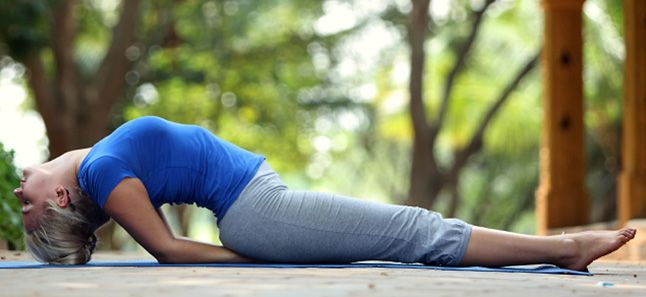Backbends are one of the most difficult asanas for the body to perform, as they require great flexibility and balance. Contrary to popular belief, backbend stretching is neither stressful nor dangerous, but is highly beneficial to the body as well as the mind.
One of the most notable benefits of backbends is relief from anxiety and stress. By opening up the frontal portion of the body, muscles and joints are relieved of the accumulated stress. This in turn helps one in coping with anxiety and other stress related ailments. In case of irritability, lack of sleep or even mental chatter, backbend poses bring immediate relief.
While in a fairly rounded backbend posture, the kidneys are said to go under compression, under which the blood drains out of the organ. When released, a fresh flow of oxygenated blooded rushes back into the organ, flushing out the toxins.
Also, backbend yogic asanas are said to open specific energy points (chakras) in the body, which help in the general well-being of the person, both in the physical and the spiritual sphere.
Here are some of the yoga asanas incorporating the backbend technique and its benefits:
Ustrasana (Camel Pose)
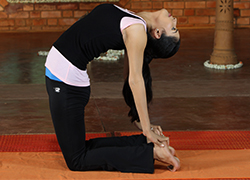
Ustrasana is an intermediate level back-bending yoga posture known to open Anahata (Heart chakra). This yoga posture adds flexibility and strength to the body and also helps in improving digestion.
Benefits of Ustrasana (Camel Pose)
- Improves digestion
- Stretches and opens the front of the body
- It also strengthens the back and shoulders
- Relieves the body of lower back ache
- Improves flexibility of the spine and also improves posture
- Helps overcome menstrual discomfort
Setu Bandhasana (Bridge pose)
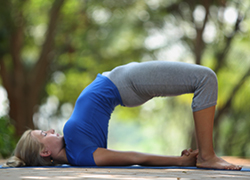
Setu Bandhasana derives its name due to its resemblance to a bridge. Highly efficient in alleviating stress and headache, this asana can be performed by beginners as well.
Benefits of Setu Bandhasana (Bridge pose)
- Strengthens the back muscles
- Relieves the tired back instantaneously
- Gives a good stretch to the chest, neck and spine
- Calms the brain, reducing anxiety, stress and depression
- Opens up the lungs and reduces thyroid problems
- Helps improve digestion
- Helps relieve the symptoms of menopause and menstrual pain
- Helpful in asthma, high blood pressure, osteoporosis, and sinusitis
Bhujangasana (Cobra Pose)
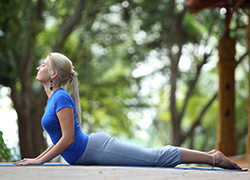
This asana resembles a serpent with its hood raised. Bhujangasana is part of the sequence of yoga postures in Padma Sadhanaand Surya Namaskar sequences.
Benefits of the Bhujangasana (Cobra Pose)
- Opens up the shoulders and neck
- Tones the abdomen
- Strengthens the entire back and shoulders
- Improves flexibility of the upper and middle back
- Expands the chest
- Improves blood circulation
- Reduces fatigue and stress
- Useful for people with respiratory disorders such as asthma
Dhanurasana (Bow pose)
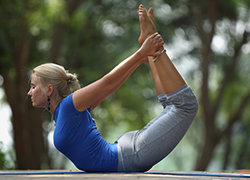
This yoga posture has been named after the shape it takes – that of a bow. Dhanurasana is also part of the Padma Sadhana sequence.
Benefits of Dhanurasana (Bow pose)
- Strengthens the back and abdominal muscles
- Stimulates the reproductive organs
- Opens up the chest, neck and shoulders
- Tones the leg and arm muscles
- Adds greater flexibility to the back
- Good stress and fatigue buster
- Relieves menstrual discomfort and constipation
- Helps people with renal (kidney) disorders
While performing the backbend postures, one is required to breathe throughout the process. This expands the chest, giving more room in the lungs; therefore, more oxygen. It also slows down the heartbeat and energizes the body. Concentrating on the breath while doing the asanas helps in maintaining the cortisol level in the body, which regulates the stress level, thus giving one a feeling of well-being.
[“source-Artofliving”]


